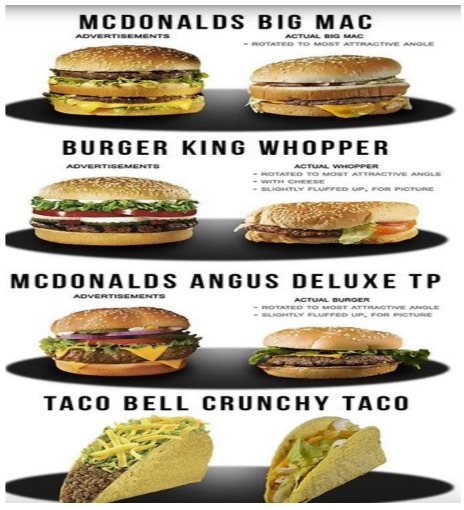Context:
The Advertising Standards Council of India (ASCI) has come up with guidelines for the protection from the menace of ‘dark patterns’, with the central government also working towards norms against ‘dark patterns’.
- The Department of Consumer Affairs and the ASCI recently held a joint consultation with stakeholders on the menace of ‘dark patterns’.
About Dark Patterns:
- Introduced by: Harry Brignull, in 2010 to characterize deceptive strategies used to trick clients.
- Definition: A dark pattern refers to a design or user interface technique that is intentionally crafted to manipulate or deceive users into making certain choices or taking specific actions that may not be in their best interest.
- It is a deceptive practice employed to influence user behavior in a way that benefits the company implementing it.
- It compromises user autonomy and decision-making while benefiting the company.
Various types of Techniques:
- Sneak Into Basket Technique:
- Automatically adding additional items to the shopping cart without user consent or clear notification.
- Example: E-commerce websites adding extra products to the cart when a user adds an item, misleading them into purchasing more than intended.
- Confirm Shaming:
-

-
- Criticizing users for not conforming to a particular belief or action.
- Example: Pop-up messages that guilt-trip users into subscribing to newsletters by using negative language like “No, I don’t want to save money”.
- Forced Action:
- Requiring users to sign up for a service to access content or perform an action.
- Example: Websites asking users to create an account to view full articles or access certain features.
- Bait and Switch:

-
- Advertising one product or service but delivering another, often of lower quality.
- Example: Promoting a high-end smartphone but providing a lower-priced, inferior model to customers.
- Hidden Costs:
- Adding or revising costs during the purchasing process without clear disclosure.
- Example: Online shopping platforms increase the price at the final checkout stage by adding undisclosed shipping or service fees.
Consequences of Dark Patterns:
- Serious Implications: Dark patterns have serious implications for user experience and data privacy, leaving individuals vulnerable to financial and data exploitation by large technology companies.
Manipulative Techniques Employed by Companies:
- Leading tech firms, including Apple, Amazon, Facebook, Google, LinkedIn, Microsoft, and Skype, strategically employ dark patterns to their advantage, compromising user autonomy and decision-making.
Examples of Dark Patterns in Practice:
- Complex Cancellation Process on Amazon Prime:
- Amazon faced criticism in the European Union for its convoluted cancellation process, making it difficult for users to unsubscribe from Amazon Prime subscription.
- Result: In response, Amazon simplified the process in 2022 to enhance user experience.
- Unsolicited Messages on LinkedIn:
- Users often receive unsolicited messages from Influencers on LinkedIn, and disabling this feature requires navigating through multiple steps.
- Impact: It becomes challenging for users to control their preferences and protect their privacy on the platform.
- Persuasive Pop-ups on YouTube:
- YouTube, owned by Google, prompts users to sign up for YouTube Premium through pop-ups that sometimes obscure the final moments of a video.
- Outcome: These intrusive tactics aim to drive user subscriptions and engagement.
Global Regulatory Response:
- European Data Protection Board (EDPB):
- Released guidelines in 2022 to identify and avoid dark patterns violating GDPR laws.
- Aimed at designers and users of social media platforms.
- Competition and Markets Authority (CMA) in the UK:
- Sent a letter to businesses listing pressure-selling techniques violating consumer protection laws.
- Promised to take action against such practices.
Indian Regulatory Response:
- Desistance: As of now, companies are being asked to desist from using such tactics in the e-market and on June 30, 2023.
- Warning: The Department of Consumer Affairs warned them against engaging in “unfair trade practices” by implementing “dark patterns” in their user interfaces to influence consumer choice and infringe on “consumer rights” as stated in Section 2(9) of the Consumer Protection Act, 2019.
Way Forward:
- Robust Legal Mechanism: With the growing use of e- platforms, a robust legal mechanism is a demand and should be fulfilled as soon as possible.
- Amendment to Existing Laws: The Indian government should also amend existing laws to specifically address dark patterns.
- Framing of New Rules: New rules aimed against deceptive design practices may need to be introduced along with updated consumer protection laws and data protection legislation.
| Additional Information:
Department of Consumer Affairs:
- It was constituted as a separate Department in June 1997, under the Ministry of Consumer Affairs, Food & Public Distribution.
Advertising Standards Council of India:
- Established: 1985 under Section 25 of the Companies Act, 1956.
- It is a voluntary, self-regulatory council, which was registered as a non-profit company.
- It is not a government body and is not responsible for formulating rules for the general public.
- Composition: A Board of Governors, members of the Consumer Complaints Council and a Secretariat.
|
News Source: The Hindu
![]() 7 Jul 2023
7 Jul 2023


